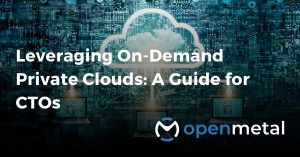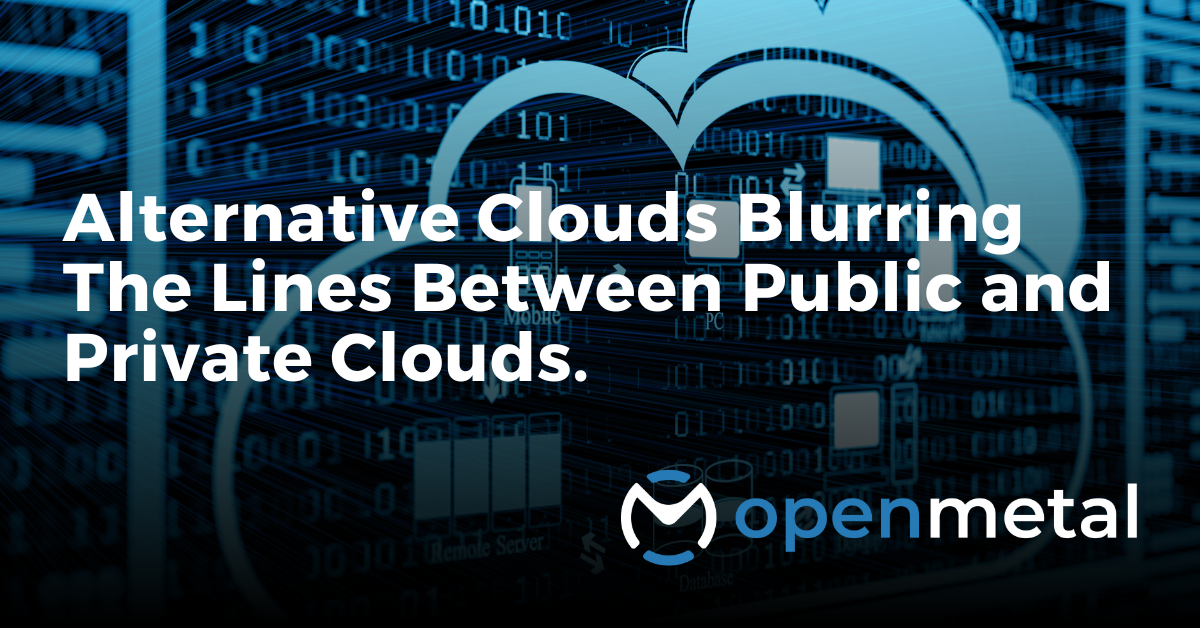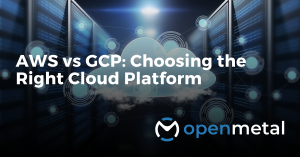The Debate: Migrating from AWS to an Existing Data Center
I published “Public Cloud vs Private Cloud Cost Tipping Points” a while back. In that, it outlines when usage of the “per unit cost” public cloud way of buying infrastructure becomes more expensive than providing the cloud yourself. So as I see people asking questions about where their “tipping point might be” I will wade into it.
I was answering a question on a Reddit thread and the person asked the following question – not exactly this, changed slightly as they even deleted the question because of the feedback:
- We spend $80k/month on AWS on EC2, Aurora, networking, and egress
- We have a data center
- We need to cut some costs so I am looking for how to get out of AWS into our own data center
- What about OpenStack?
As you might imagine, the poster got a lot of “why would you possibly move out of AWS, you are just going backwards, so foolish” comments. This kind of reaction is common. What the mega-clouds did was amazing – a combination of how empowering having instant access to resources are and brilliant marketing. Created a great advocacy base – sometimes not very kind base, but likely what they were going for.
BUT, tipping points are real.
My answer (tweaked for clarity):
Key Facts
- You have a data center already – so you’re paying that bill no matter what.
- You are spending $1M/year on basic services like EC2, managed databases (Aurora), and networking things like load balancing.
- For background, I am with OpenMetal so, yes, I will definitely be biased to OpenStack, but we have customers that are solving very similar issues as what you are presenting.
First, as other answers mentioned:
- It is true that OpenStack and the general concept of running your own open source cloud is complex.
- Next, very importantly – OpenStack and running your own stable clouds have gotten much easier and less time consuming than in previous years. Just as the public clouds got better/easier to use, so have OpenStack and other key softwares, like Ceph, matured. Not trivial to run, of course, but definitely better every year that goes by. And, yeah, you already have a running data center!
So regarding the more specific questions:
Feature Parity with AWS
A typical OpenStack based cloud will have all the core things mentioned:
- VM instances to replace EC2.
- Projects in OpenStack equal AWS’s Virtual Private Clouds that will come with the load balancers, private networks, firewalling, etc.
- Your Aurora – managed MySQL or PostGres – maps to the OpenStack Trove component. This is not as common to see in “standard” OpenStack installs as complex managed database setups require in depth knowledge of the database under question. Think the difference between provisioning a single MySQL DB versus setting up some kind of “active-active write and read database set with 4 read only database clones and a heartbeat failover time of 10 seconds”. You will want to budget extra time for either getting OpenStack Trove going to manage your databases or to setup databases on top of VMs and simply leverage the redundancy provided by the databases themselves.
It is straightforward to automate against a running OpenStack using Terraform. This is just built into using a VPC – what is known as a Project in the OpenStack world.
Other things to know about private clouds:
- In the OpenStack world, you will likely have a Ceph Cluster either converged or separate from OpenStack, but controlled for users from OpenStack.
- Ceph provides block storage, filesystems, and, probably most important for you all in addition – you will get object storage. S3 API compatible.
- Your egress costs – not mentioned in the original questions – are likely to fall to little or nothing since you already have a connect and likely you are not running at the max of your provider’s agreement. Maybe you are, but that would be pretty unusual – maybe 1 out 500 people we talk to actually are against their commit.
Ballpark Team Requirements: Ongoing OpenStack Cloud Management
So – team requirements for “Operating” – most customers we work with generally already have an Operations Team of some sort. With you running $83k/month of infrastructure on the public cloud, you must have some people already making sure all that is running properly.
Add in that since you are running your own DC already, I am guessing you have a certain amount of infrastructure in it and people already on staff for that DC’s infrastructure. This is a key point though, as taking on a private cloud does require a certain scale to pencil out correctly. We call it the “tipping point” when private cloud starts to make sense. In your case, with around $83k/month in spend ($1M/year) and that you have a data center already, you are definitely past the purely monetary based tipping point.
Net effect – you will have to add some budget to also help run the underlying cloud, but it would depend on what your current Operations Team can take on.
Skill sets of the Operations Team that will handle maintenance and health of a well built OpenStack Cloud? Running modern OpenStack is well within a skilled Linux System Admin’s abilities – think 10+ years experience, is into cloud infrastructure, knows Ansible well, etc. But you will need to give that admin time and a playground to learn.
Initial OpenStack Deployment
For getting the initial OpenStack up and running, I highly recommend having an OpenStack specialist company help you make your first. Getting a well built OpenStack up and running is much, much harder than maintaining a well built OpenStack. If you build one, it requires very advanced networking skills, hardware expertise, architecture of cloud experience, trial and error experience, a rapid prototyping PoC system, etc.
Here at OpenMetal we don’t do OpenStack in end client’s data centers so we are not one of these providers – but if you decide to go this way I can give you a list of companies that are both good and don’t charge “enterprise prices”.
If you decide to build the first on your own – well, I have some other advice, but that is a long answer, so only will write it out if you ask me to. I hope this was helpful for the asker of these questions, and for anyone else considering their tipping point and moving away from the mega-cloud providers.
Learn More About OpenStack Powered Private Cloud
More on the OpenMetal Blog…

Leveraging On-Demand Private Clouds: A Guide for CTOs
Explore this comprehensive guide on how Chief Technology Officers (CTOs) and technical executives can harness the power of on-demand private clouds for their organizations. In ….Read More

Alternative Clouds Blurring The Lines Between Public and Private Clouds
This blog discusses the rising costs and lack of control in public cloud services and explores the alternative solution of OpenMetal’s On-Demand …Read More

AWS vs GCP: Choosing the Right Cloud Platform
AWS and GCP are leading players in cloud computing, offering a wide range of services and attractive pricing. However, choosing the right platform requires understanding their strengths … Read More
Test Drive
For eligible organizations, individuals, and Open Source Partners, Private Cloud Cores are free to trial. Apply today to qualify.
Subscribe
Join our community! Subscribe to our newsletter to get the latest company news, product releases, updates from partners, and more.



































